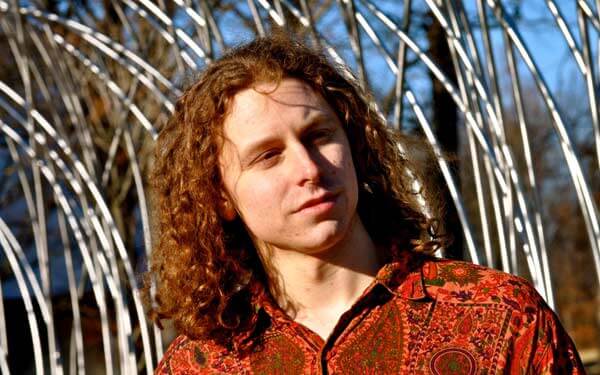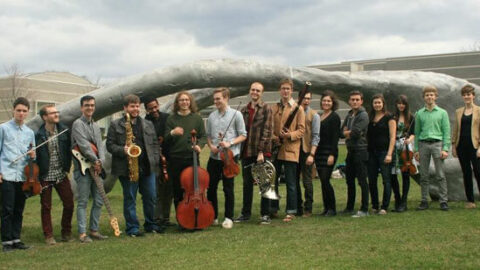 For those unfamiliar with New York-based Contemporaneous, you need to learn about what you’re missing. The tenacious new music ensemble was founded in 2010 at Bard College by composer/cellist Dylan Mattingly and composer/conductor David Bloom with the mission of “performing and promoting the most exciting music of now.” They’ve stayed true to that statement, premiering over 30 new works by young and emerging composers. Their November 15, 2013 concert at First Presbyterian Church in Brooklyn Heights on their Music at First series, titled Breathe, featured another premiere, of Albert Behar’s piece The Beauty in Breathing. The concert, conducted by Bloom, also featured performances of works by Samuel Carl Adams and Mattingly.
For those unfamiliar with New York-based Contemporaneous, you need to learn about what you’re missing. The tenacious new music ensemble was founded in 2010 at Bard College by composer/cellist Dylan Mattingly and composer/conductor David Bloom with the mission of “performing and promoting the most exciting music of now.” They’ve stayed true to that statement, premiering over 30 new works by young and emerging composers. Their November 15, 2013 concert at First Presbyterian Church in Brooklyn Heights on their Music at First series, titled Breathe, featured another premiere, of Albert Behar’s piece The Beauty in Breathing. The concert, conducted by Bloom, also featured performances of works by Samuel Carl Adams and Mattingly.

Behar’s work is based on breathing and the heartbeat—his own breathing and heartbeat actually. During the performance, Behar wore a LifeShirt, a device invented by his grandfather that wirelessly measures the vital signs of the person wearing it. For The Beauty in Breathing, Behar used the LifeShirt to project his own breathing and pulse into a Max/MSP patch that was displayed on a screen behind the ensemble. Conductor David Bloom then followed Behar’s heartbeat, which was constantly changing, like a metronome. Behar’s piece, with its ebbing and flowing pulses and swells, was truly remarkable to see performed live. I hope it receives another performance soon.
The second work on the program was twenty four strings by Samuel Carl Adams. This piece is scored for an ensemble of two violins, two violas, and two cellos, and features Adams’s own unique compositional voice in conversation with classical gestures and references. The structure of the piece is ABA, but Adams takes the audience so far on a journey from where he began that one nearly forgets the A section until returning to it at the end. Adams’s reconciliation of his own sound world and the sound world of the classical gestures was remarkable, and the piece was masterfully crafted and expertly performed by the sextet from Contemporaneous.

The second half of the concert was dedicated to performance of Dylan Mattingly’s Atlas of Somewhere on the Way to Howland Island. The piece recounts the final flight of Amelia Earhart, and the sound of her plane’s engine starting up is actually incorporated into the music as a rhythmic motive. Contemporaneous released a recording of Mattingly’s piece on their CD Stream of Stars. While the recording successfully captures the music, it certainly does not give it as much justice as a live performance. The dichotomy between the ensemble and the detuned harp was truly felt during this live performance, and the live aspect also offered a blending of sounds and colors that showcased Mattingly’s lovely orchestration. The 35-minute piece is incredibly powerful, and in a live performance the sheer beauty and skill involved in the work was only enhanced.
Throughout the concert, conductor David Bloom displayed such energy and passion that it was hard not to get pulled in by his conducting. Watching him conduct is like watching a dance, and everything is perfect, marked by such precision and clarity. Bloom’s leadership at the podium is no doubt a major factor in Contemporaneous’s success.
Contemporaneous has once again displayed the passionate drive for new music in a younger generation of composers and musicians. The musical ability of all of the players in the group is fantastic, and coupled with a drive to commission and perform new works by young composers, Contemporaneous is setting an extremely high bar for other ensembles to live up to.
























